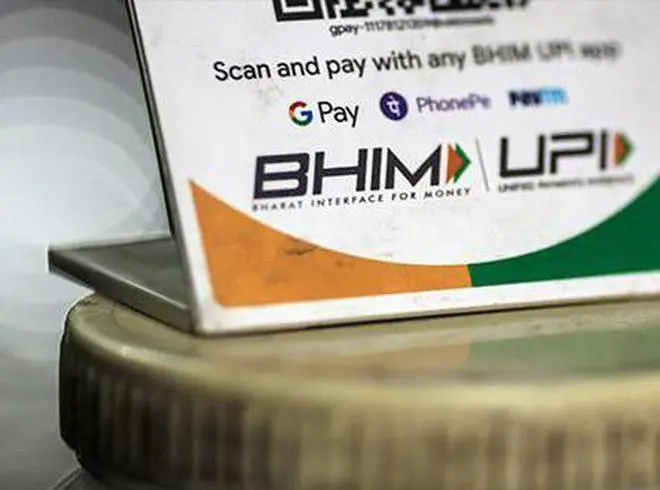The Indian approach to payments transformed rapidly when UPI transactions were introduced to the market. Initially, a cash-led economy, India took the metaphoric first step on the moon with the introduction of UPI (Unified Payments Interface). It allowed the working class to become empowered with online payments, a demographic that forms the vast majority of this country.
However, we have now reached a stage where the limitations of UPI are making themselves apparent. One happens to be the lack of credit card usage via UPI. This changed in June 2022, when the RBI declared that they were taking a step towards enabling credit card linking with UPI.

In its monetary policy, RBI has announced that steps will be taken to integrate UPI framework with credit cards
In his monetary policy review speech, the RBI governor Shaktikanta Das was quoted as saying: "UPI facilitates transactions by linking savings or current accounts through users' debit cards. It is now proposed to allow the linking of credit cards on the UPI platform.....to begin with, the RuPay credit cards will be linked to UPI. This will provide additional convenience to the users and enhance the scope of digital payments.”
Why does the RBI intend to encourage UPI payments?
The National Payments Corporation of India (NPCI) has recorded over 26 crore UPI users (almost 20% of the population). This is estimated to double over the next few years.
The RBI’s interest in linking RuPay credit cards to UPI payments allows a double advantage for financial institutions, users, as well as the government. For one, credit card users are now more likely to switch to UPI. Credit card users, currently, only use UPI for low-value transactions. However, by enabling credit card linkage to UPI, the users can make higher ticket transactions through UPI.
But that’s not the only reason. As a card provider, RuPay is highly favoured by the RBI. An Indian-bred brand, it has a market share that has risen to almost 60% in the past five years (via debit card). The facilities to use RuPay credit cards via UPI make it an unparalleled option for users in the credit segment.
Is this linking of credit cards to UPI actually viable?
While UPI was associated only with debit, it was easy for merchants of all budget brackets to accept payments. This was because UPI comes at no cost to the receiver, aside from the one-time time investment in setting up the interface. Credit cards make this dicey.
Unless the RBI clarifies the execution plan for this new introduction to the UPI framework, it is likely that usage of credit cards will bring about an MDR charge. This is a charge merchants will have to either pay out of pocket or charge to their customers. Regardless, it will jack up the final price of whatever commodity is being purchased by the end user.
Even if the MDR charges on RuPay cards are negligible, they might still cause a reversal of the financial ecosystem. A shift like that could be a setback in the otherwise accelerated financial technology growth that UPI has enabled.

MDR charges might push users back to cash for larger payments or avoid the UPI system altogether if they’re paying the same charge by swiping a card.
There is no doubt that this move could provide an advantage to RuPay and its credit card users (mostly the agrarian class, who are otherwise cut off from credit-enabled online payments). But whether this advantage is tangible in the near future cannot be clarified unless the RBI and NPCI share exactly how the integration of credit cards with UPI will function, and at what cost.
Another factor to consider is RuPay’s primary competitors. Higher-economic sections of India continue to rely largely on Visa and Mastercard. It is not purely loyalty that keeps them there (although that is one reason). It is the plethora of benefits that Visa and Mastercard provide their users on a global level, which RuPay does not have the ability to currently provide.
These benefits might not be usable by the target audience of RuPay, but they are the main reason that Visa and Mastercard users are unlikely to leave their preferred card networks.
As a result, unless Visa and Mastercard are also integrated with UPI, there might not be a significant shift in credit payments on UPI from these users. The only real shift will be seen from RuPay users.
What is evident, though, is that this move will increase the accessibility of credit-enabled payments across multiple demographics in India. It might even cause Visa and Mastercard to change their market approach in India, in an effort to compete, creating a more diverse and wholesome range of financial services for users to choose from.
Rajith Shaji is the CEO & Co-Founder of Volopay. Views are personal





Comments
Comments have to be in English, and in full sentences. They cannot be abusive or personal. Please abide by our community guidelines for posting your comments.
We have migrated to a new commenting platform. If you are already a registered user of TheHindu Businessline and logged in, you may continue to engage with our articles. If you do not have an account please register and login to post comments. Users can access their older comments by logging into their accounts on Vuukle.